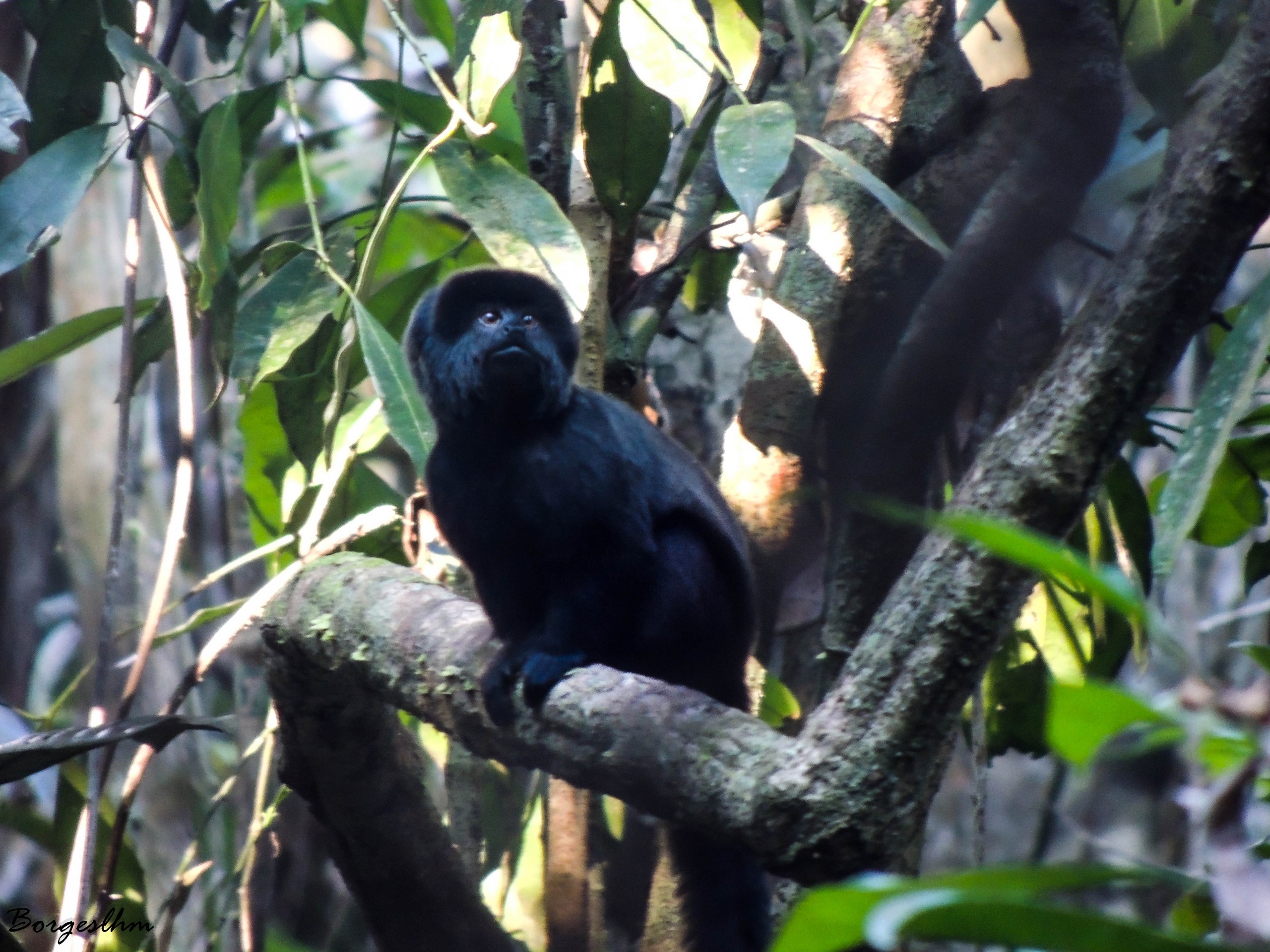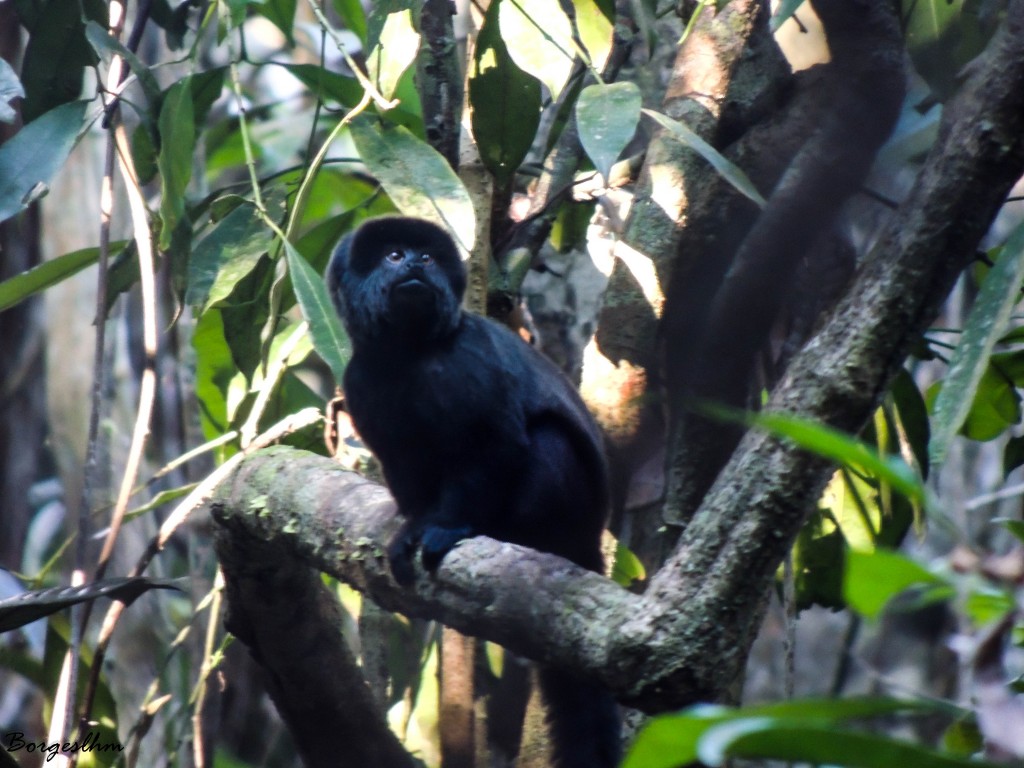
A photo of Callimico Goeldi
In July of this year, we were at Chandless State Park. It was an inspection activity and also to deliver baskets of food and cleaning and hygiene material to the residents of the Conservation Unit.
One afternoon, my friend Ricardo Plácido, a birdwatcher, went out for an evening stroll. Even at the beginning of the trail, near the park’s headquarters, I heard Leontocebus weddelli (Weddell’s Saddle-back Tamarin) vocalizing, as he has already trained, so I was attentive. A few moments ago I heard the different vocalizations, and looking even faster, I noticed the movement pattern characteristic of the Goeldi’s Monkey.
I told Ricardo, look that.
It was a group of five individuals, quickly Ricardo and I started the epic to make a photo of the species in the wild. It was difficult because the environment was tangled with vines and bamboo, and any sudden movement drove the specimens away. With great patience, caution, and time I got this beautiful record.
The Chandless State Park is a state conservation unit, located in the center east of the state of Acre, Brazil, with approximately 690 thousand hectares of preserved forest, with a high wealth of mammals.

3 Comments
-
-
tomeslice
Great photo!!
Here’s an unimportant piece of information:
During my sophomore year in college I took an elective class about non-human primatology (I majored in Mechanical engineering), where I had to research the behavior of a species of primate of my choice from the local zoo.
They were just about to transfer to Geoldis Monkeys from a glass-window exhibit to the open area in the middle of the primate house, and I would be allowed to be there when they first released them.So with the hopes of one jumping out and climbing on me (which obviously never materialized) I researched them for a semester and then wrote a 50-page study about their behavior. Super cool species! I really want to see them in the wild some day 🙂
Leave a Reply
You must be logged in to post a comment.


Charles Foley
Hi Luiz,
That’s a great shot of a Callimico – well done. There are very few good photos of this species in their native habitat. Even though Goeldi’s monkeys are one of the most commonly exhibited small primates in zoos around the world, they are really difficult to see in the wild. I guess this is partly because they live in areas that are really hard to get to, but also because they are quite shy. About 30 years ago I went on an Oxford University expedition to the Pando area of northern Bolivia – to the south of where you were – to do a census of Goeldi’s monkey in the area. They were quite uncommon and we only had 8 sightings in 6 weeks. My best sighting was when we found a small group of them feeding in a small bush, and were able to watch them for about 10 minutes while they fed and moved around. That remains one of my mammal watching highlights.
We used Cobija on the border with Brazil as our gateway into the area. We stayed in the town for a few days while we sorted out logistics and someone asked us if we wanted to meet a local environmentalist. We said yes, but they were a bit vague about who it was and how we’d meet them. That evening they took us to a house on the Brazilian side of the town, and it turned out that the environmentalist was Chico Mendes. We had a great evening with him talking about local conservation issues. He was murdered shortly afterwards, but it’s good to see that a large reserve just north of the town was named after him.
Charles